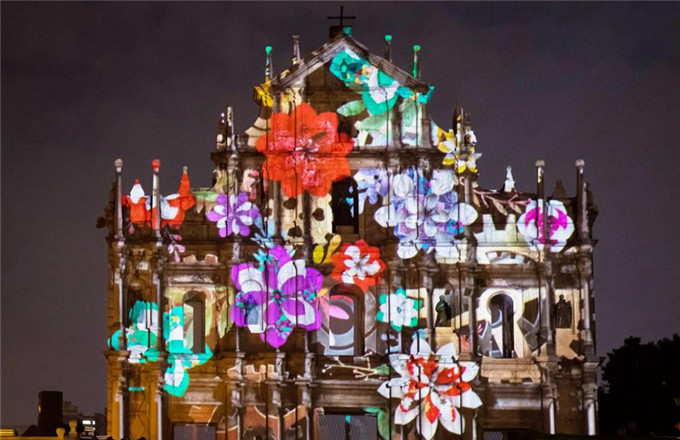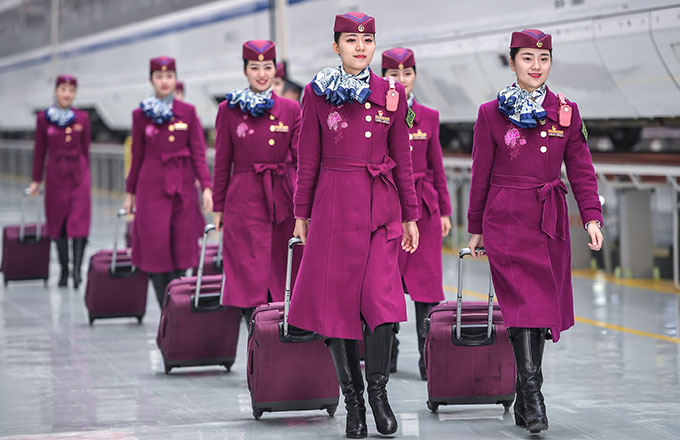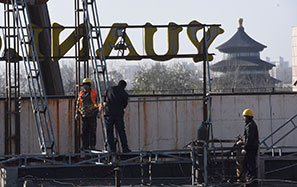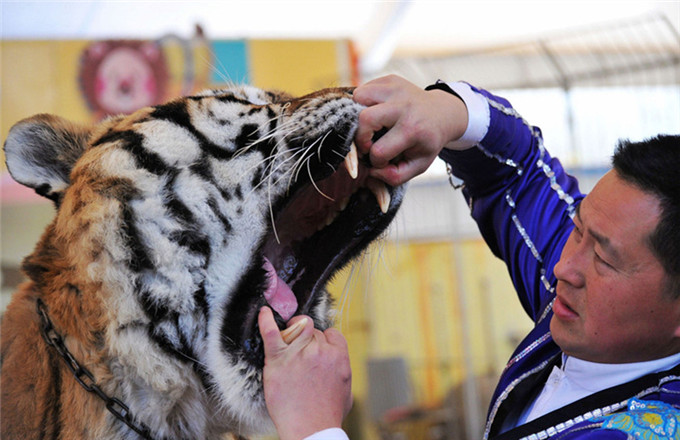Kung fu and commerce
|
A ceremony being held in front of the statue of Buddha on Xiqiao Mountain. Provided to China Daily |
Foshan's fame lies in the fighting arts. Since the Ming Dynasty (1368-1644) it has been a center for martial arts training and in the late Qing Dynasty (1644-1912), and early days of the Republic of China the influence of martial arts organizations in the city began to spread internationally.
The fighting styles Wing Chun Kuen, Choy Li Fut and Hung Kuen all originated in Foshan, and many of the world's best-known kung fu masters are from the city, including Bruce Lee, Yip Man and Wong Fei-hung.
But while martial arts is what draws many travelers to Foshan, it is also a perfect place to experience the modern industrial China that has shaped global markets in recent decades.
Located in the southern province of Guangdong along the northern stretch of the Pearl River, the city is made up of five districts: Shunde, Gaoming, Chancheng, Nanhai and Sanshui, which stretch out across 3,840 square kilometers with a population of about 7.1 million.
It is an important industrial base, which benefits from its close connections with Guangzhou, with which it shares considerable history and culture, and its position between southeast and eastern Asia.
It is also the hometown of many overseas Chinese - about 1.4 million call Foshan home - possibly as a result of its international business connections.
Foshan's reputation as a city of commerce is not a modern phenomenon.
In the Ming and Qing dynasties it was already known across China as a business city. The country's first matchstick factory and silk reeling business were established in Foshan.
Today, Foshan is the third-largest manufacturing base in the Pearl River Delta, after Shenzhen and Guangzhou.
It was once home to many China's state-owned enterprises, but its current economic strength lies in the private sector.
Many well-known brands, including Jianlibao, Midea and Kelon are based in the city. It is also a major base for the international furniture and lighting industries.
Here are some of the city's main attractions:
1. Zumiao temple
The history of Zumiao Temple can be traced back to the Northern Song Dynasty (960-1127). It was built in dedication to the Northern God, who was said to hold power over the waters of Guangdong, and was sometimes called the Northern God Temple.
Covering 3,500 square meters, the temple it was burnt down in the late Yuan Dynasty (1271-1368) and was rebuilt in the fifth year of the Hongwu Period (1368-1398) of the Ming Dynasty.
The temple includes the Wanfu Stage, Sanmen Gate, Lingying Archway, Jinxiang Pool, Qingzhen Building, the Bell and Drum Tower, a front hall and a main hall. All the temple furnishings and materials used to construct it were donated by local businesses and so reflect the city's industrial culture.
2. Xiqiao Mountain
Designated a national park by the central government, Xiqiao Mountain is dotted with lakes, pools and waterfalls.
The mountain has been inhabited since the Neolothic Age, 6,000 years ago.
During the Ming and Qing dynasties it was home to many scholars and was known as the Mountain of Philosophy.
It was also an important center of Nanquan, a martial art developed in the 1960s, as well as the birthplace of Wong Fei Hung, a Chinese martial artist, physician, acupuncturist and revolutionary, who has been the subject of numerous Chinese movies and television series.
The mountain has 72 peaks, the tallest 340 meters, and 36 caves. The most well known cave is White Cloud Hollow, at the western foot of the mountain, which houses several temples and pavilions.
One of the most imposing sights on the mountain is a 61.9 meter Buddhist statue standing atop one of the many peaks.
3. Bruce Lee family home
Located in Shang Village of Shunde district, Bruce Lee's childhood home is a humble-looking building typical of the Pearl River Delta. Built of brick and wood, it includes a bedroom, kitchen, courtyard and hall, and contains a wooden dummy that Lee is said to have used to practice his martial arts.
Lee also practiced in the courtyard, although he only lived in the house for a few years, spending most of his childhood in Hong Kong and the US.
The house is furnished simply and includes a memorial tablet to Lee's ancestors.
A short walk from the house, at the entrance of the village, is the Lee Ancestral Hall, built by Bruce Lee's grandfather in honor of deceased family members.
China Daily



















